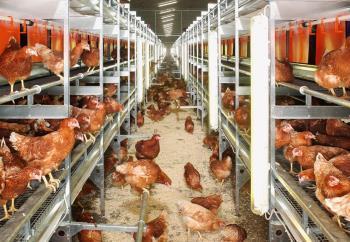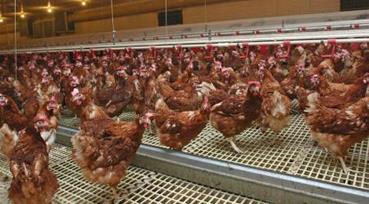 The USDA Cage-Free Report covering September 2025, was released on October 3rd 2025.
The USDA Cage-Free Report covering September 2025, was released on October 3rd 2025.
The report documented the complement of hens producing under the Certified Organic Program to be 20.0 million (rounded to 0.1 million), unchanged since July 2025. The number of hens classified as cage-free (but excluding Certified Organic) and comprising aviary, barn and other systems of housing apparently increased by 0.3 million hens or 0.3 percent from August 2025 to 116.6 million, attributed to repopulation of depleted flocks.
Extensive depopulation was carried out as a result of HPAI through the fourth quarter of 2024 and continuing in January and February 2025 (31 million), but with lower intensity in March (0.2 million) and April (1.0 million) and a single large complex in Arizona during May (3.8 million). Losses reemerged during late September in a caged-bird complex in Wisconsin (3.1 million hens and +250,000 pullets).
Average weekly production for Certified Organic eggs in September 2025 was down 1.0 percent (rounded) compared to August 2025 with a high average weekly production of 83.1 percent. Average weekly flock production for cage-free flocks other than Certified Organic was down 0.4 percent in September 2025, with a high average hen-month production of 81.9 percent. Seasonally placed flocks in anticipation of periods of peak demand will increase the availability of cage-free and organic eggs, reflecting pullet chick placements 20 weeks previously.

There is no adequate explanation for the high production rates recorded especially if the reported number of hens is lower than actual, and in view of possible undercounts following HPAI flock depopulation. It is assumed that almost all cage free flocks are in the first cycle of production with negligible molting contributing to the high average in hen-week values compared to caged hens.
According to the USDA Egg Markets Overview and data from the weekly USDA Shell Egg Demand Indicator, the categorization of U.S. flocks according to housing system among 292.2 million producing hens or a total flock of 296.9 hens on August 1st comprised*:-
Caged, 160.5 million, up 4.1 million and comprising 54.1 percent of the total flock;
Cage Free (non-organic), 116.3 million (39.2% of total flock) with 86.2% of this population in barns, 7.2% on free-range and 6.6% on pasture;
Cage Free (organic), 20.0 million, unchanged from July with 60.0% of this population in barns and 23.5% on free-range and 16.5% on pasture or other extensive systems
*Updated figures will be posted after USDA resumes publication following the end of the Federal shutdown
Losses attributed to HPAI in 2025-to-date comprised:-
Caged flocks, 24.6 million representing 8.4 percent of a nominal 290 million producing hens
Cage-free flocks, 14.8 million representing 5.1 percent of the national flock
Organic flocks, negligible, >0.1 percent
|
Average Flock Size
(million hens)
|
Average
September 2025
|
Average
Q3- 2025
|
Average
Q2- 2025
|
Average
Q1 –
2025
|
Average
Q4 –
2024
|
Average
Q3-
2024
|
|
Certified Organic
|
20.0
|
20.0
|
20.0
|
20.4
|
20.5
|
20.0
|
|
Cage-Free Hens
|
116.6
|
115.6
|
108.4
|
103.4
|
104.5
|
103.9
|
|
Total Non-Caged
|
136.6
|
135.6
|
128.4
|
123.8
|
125.0
|
123.9
|
|
Average Weekly Production (cases of 360 eggs)
|
August
2025
|
September
2025
|
|
Certified Organic @ 83.1% hen/day
|
325,498
|
322,270 -1.0%
|
|
Cage-Free @ 81.9% hen/day
|
1,864,371
|
1,857,403 -0.4%
|
|
Total Non-Caged @ 82.1% hen/day
|
2,189,169
|
2,179,773 -0.4%
|
On September 29th USDA recorded the following National inventory levels expressed in 30-dozen cases (rounded) with the monthly change as a percentage of the total quantity of eggs:-
Commodity shell eggs of all sizes. 1,558,200. (+14.3%)
Commodity breaking stock. 343,700. (+12.5%)
Specialty eggs. 39,100. (+5.4%)
Certified organic eggs. 89,200. (-2.4%)
Cage Free eggs 439,000. (+6.1%)
|
Average Nest Run Contract Price Cage-Free
White and Brown combined
|
$1.73/doz. (unchanged from May)
|
|
September 2025 Range:
|
$1.55 to $2.10/doz. (unchanged from May)
|
|
FOB Negotiated September price, grade-ready quality, loose nest-run. Price range $1.00 to $2.45 per dozen
|
Average September 2025 Value of $1.34/doz. ($2.23/doz. August 2025)
|
|
Average September 2025 advertised promotional National Retail Price C-F, Large Brown
|
$3.40/doz. Sept. 2025 (5 regions)
(Was $3.74/doz. in August 2025)
|
|
USDA Based on 5 Regions, 421 stores
NW, NE, SE, MW & SC.
|
Range $4.99/doz. (NW) to $2.84/doz. (NE)
|
Negotiated nest-run grade-ready cage-free price for September 2025 averaged $1.47 per dozen, down $0.46 per dozen (-23.8 percent) from $1.93 per dozen in August 2025, reflecting a restoration of balance between demand and supply.
The September 2025 advertised U.S. featured retail price for Large White cage-free eggs over 1,823 stores in six regions (NW, NE, SE, SW, MW and SC.) was $3.45 per dozen. This compares with 761 stores featuring cage-free Large White in August and reflects fewer promotions as the year has progressed, consistent with the negligible incidence rate of HPAI from late May through September. The September 2025 advertised U.S. featured retail price for Large Brown cage-free eggs over 421 stores in five regions was $3.40 per dozen with a range of $2.84 per dozen in the NE region to $4.99 per dozen in the NW region.
The recorded average gradeable nest run price of $1.47 per dozen for brown and white cage-free combined plus a provision of $0.60 cents per dozen for packaging, packing and transport, resulted in a theoretical price of $2.07 per dozen delivered to CDs. The average advertised promotional retail price of $3.40 per dozen for Brown and $3.45 per dozen for white represented retail margins of 66.7 percent for featured White and 64.2 percent for Brown respectively. Fewer promotions were offered for White compared to Brown cage-free by stores reflecting the balance between supply and demand for the two broad categories. Margins are presumed higher for non-featured eggs including pastured and other specialty eggs at shelf prices attaining in excess of $8.00 per dozen in high-end supermarket chains. Retailers maximizing margins especially on Certified Organic, free-range and pastured categories restrict the volume of sales, ultimately disadvantageous to producers.